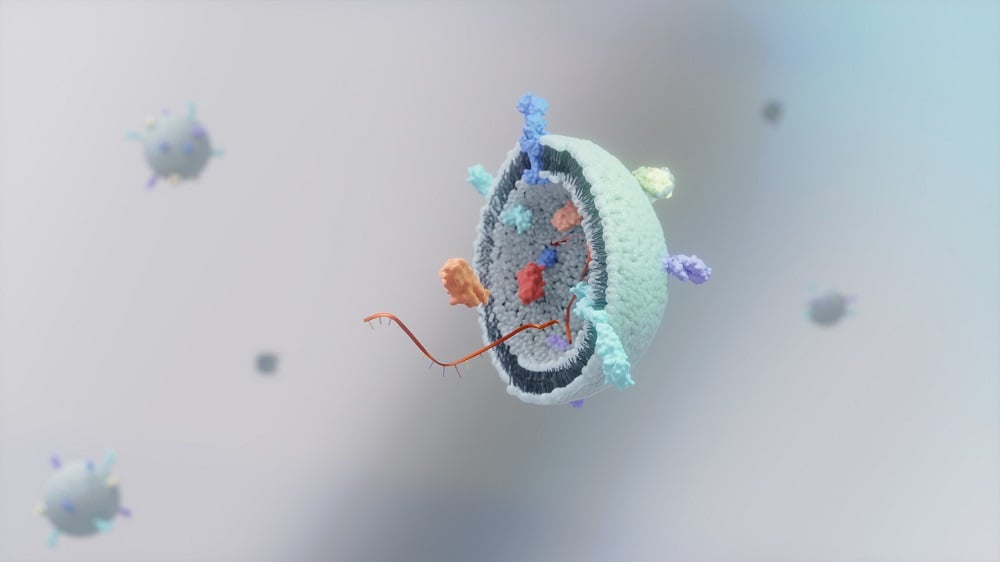In a groundbreaking study, researchers have identified a new mitigator of senescence, shedding light on the complex processes that underlie cellular aging. The study, published in the journal Aging, highlights the role of a highly conserved protein in reducing inflammation markers, potentially paving the way for future therapies aimed at combating age-related diseases.
DNA Damage and Senescence
Cellular senescence can be likened to a computer system gradually accumulating errors in its code over time. In living organisms, despite robust DNA repair mechanisms, DNA damage can accumulate, leading to incorrect genetic information. When damage becomes extensive, cells may enter a state of senescence, characterized by a cessation of division and a deleterious secretion of pro-inflammatory factors known as the senescence-associated secretory phenotype (SASP).
Less SASP and Inflammation
The research team, hailing from the Buck Institute for Research on Aging and the Lifespan Research Institute, explored this phenomenon using model organisms such as Drosophila flies, mice, and human cells. The study revealed that:
- Adult female flies exposed to radiation exhibited increased DNA repair markers but simultaneously showed elevated senescence markers, specifically β-galactosidase.
- Aged flies, which were not subjected to radiation, displayed a similar pattern, indicating that aging naturally induces similar types of damage over time.
In previous studies, several genes in Drosophila were correlated with increased gut permeability post-irradiation, including the gene meltrin. During the current study, researchers noted a significant downregulation of meltrin expression following radiation exposure. To confirm this relationship, the researchers employed RNA interference to knock down meltrin and performed a Smurf assay, which determines gut permeability by measuring the extent to which blue dye leaks from the gut into the bloodstream. The results showed a striking difference:
Half as many "Smurf flies" developed in the irradiated group as compared to controls, significantly lowering DNA repair markers and senescence markers.
ADAM19 and Senescence
Meltrin is highly conserved, exhibiting a homolog in mammals known as ADAM19. Prior research has established that ADAM19 is implicated in gut functionality, particularly in conditions such as inflammatory bowel disease (IBD). The researchers created a murine model to investigate this further using doxorubicin, a chemotherapy agent known to increase gut permeability.
Marking changes in intestinal permeability, inflammation, and cellular senescence, it was found that:
| Marker | Doxorubicin Treated | Treated with BB-94 |
|---|---|---|
| Intestinal Permeability (Fecal Albumin) | Increased | Decreased |
| Inflammation (IL-6) | Elevated | Inhibited |
| Cellular Senescence (p21) | Increased | Blocked |
This investigation further delved into the effects of ADAM19 on human cells. When human fetal lung fibroblasts were exposed to irradiation, a large proportion underwent senescence and began secreting SASP factors, including β-galactosidase, IL-6, IL-8, and IL-1α. Through the inhibition of ADAM19 with BB-94 and RNA interference, both techniques successfully reduced senescence markers.
The Implications of Findings
The implications of this research signify a pivotal advancement in understanding the aging process. A Disintegrin and Metalloproteases (ADAMs) are known for their role in ectodomain shedding, crucial for cellular signaling. Although the exact mechanisms linking ADAM19 to a reduction in SASP factors remain to be elucidated, the researchers suggest that:
“Inhibitors of ADAM19 may represent a novel class of senomorphics—drugs designed to modify senescent cells’ behavior in a less destructive manner.”
Cross-Species Insights
The study also emphasized the shared regulatory mechanisms across different species, as noted by Dr. Amit Sharma, the head of senescence-related programs at the Lifespan Research Institute:
“Common regulatory mechanism between flies, humans, and mice provides avenues for exploring senescence heterogeneity and new therapeutic possibilities.”
Future Directions
This research indicates significant potential for further studies on the role of ADAM19 in senescence across various organisms. Future investigations are planned to:
- Examine the effects of ADAM19 in other senescence models.
- Explore the relationship between senescence and dietary interventions.
- Investigate additional genes within the same family that may contribute to senescent behavior.
Literature Cited
[1] Bar, S., et al. (2025). Inhibition of the metalloprotease ADAM19 as a novel senomorphic strategy to ameliorate gut permeability and senescence markers by modulating senescence-associated secretory phenotype (SASP). Aging.
[2] Franzè, E., et al. (2013). High expression of the “A Disintegrin And Metalloprotease” 19 (ADAM19), a sheddase for TNF-α in the mucosa of patients with inflammatory bowel diseases. Inflammatory bowel diseases, 19(3), 501-511.
[3] Lichtenthaler, S. F., et al. (2018). Proteolytic ectodomain shedding of membrane proteins in mammals—hardware, concepts, and recent developments. The EMBO journal, 37(15), e99456.













Discussion